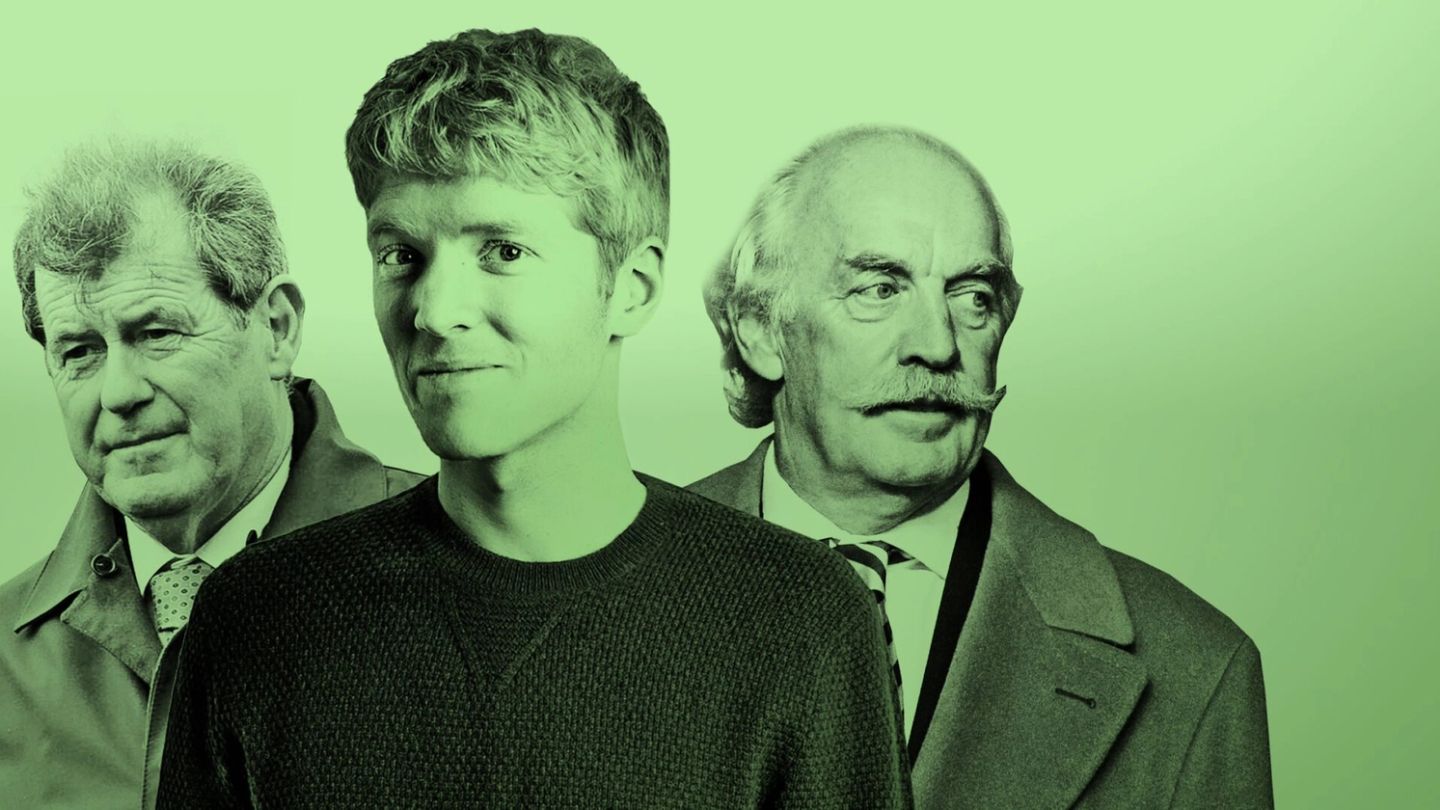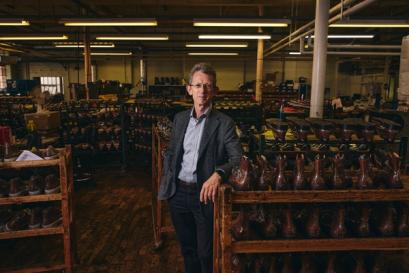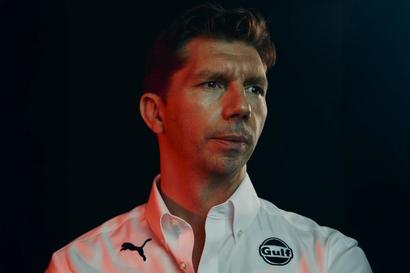

These are the most successful Irish businessmen
From the man who Ryanair off the ground to a pair of champion horse-breeders, these are the most moneyed men in Ireland…
- Words: Jonathan Wells
What does the colour green mean to you? For some, it represents success. For others, money. It’s also happens to be the national colour of Ireland. And, for a few — such as this moneyed bunch below — the colour combines all three meanings.
Because, whether it’s the man who got Ryanair off the ground, or a pair of champion horse-breeders, these magnates and tycoons are the most successful men the Emerald Isle has ever produced…
Tony O’Reilly, born 1936
What’s his net worth? Currently £149 million. Comparatively, that makes O’Reilly small fry — but he was once considerably more successful, and arguably the first billionaire ever from in Ireland.
What’s he known for? A little bit of everything. He’s been the CEO of the Independent News & Media Group, Heinz (them of the beans) and the leading shareholder of Waterford Wedgwood. He also played for the British and Irish Lions and the Barbarians.
What’s the key to success? “Truly great brands are far more than just labels for products,” O’Reilly once said. “They are symbols that encapsulate the desires of consumers; they are standards held aloft under which the masses congregate”.
Michael O’Leary, born 1961
What’s his net worth? £903 million. O’Leary began his career at KPMG, where he met Tony Ryan (another Irishman who founded the aircraft leasing company Guinness Peat Aviation). And together, they created…
What’s he known for? Ryanair. O’Leary became chief financial officer of the budget airline in 1988, and developed the successful low-cost model by supplementing cheap ticket sales with onboard shopping, internet gaming, car hire and hotel bookings.
What’s the key to success? “The other airlines are asking how they can put up fares,” said O’Leary in 2001, explaining his ancillary revenue model. “We are asking how we could get rid of them”.
Martin Naughton, born 1939
What’s his net worth? £1.3 billion — moving us into the realm of the billionaires. Naughton, born in County Louth, founded Glen Electric in 1973, employing just a handful of people. Four years later, he acquired the leading British heating brand, Dimplex.
What’s he known for? The company this merged created; GlenDimplex. And, while it may not have the name recognition of Ryanair above, it’s a firm with many brands under its umbrella — Morphy Richards, Roberts Radio and LEC Fridges among them.
What’s the key to success? According to Naughton, globalisation. “We recognised from the start that we couldn’t just stay in the UK and Ireland markets,” he said in 2013. “We have always looked to the products of the future. I’ve always said, ‘If you don’t innovate, you’ll evaporate’.”.
Dermot Desmond, born 1950
What’s his net worth? £1.7 billion. Born in County Cork, Desmond left eschewed a university education in favour of working at Citibank in Dublin. It was a savvy move — and set him on the way to becoming one of the richest Irishmen alive today.
What’s he known for? Once again, Desmond’s dealings are myriad — from being on the board of Aer Rianta to buying London City Airport in 1995 for £23.5 million. But his most prominent tradings are in football. Previously a Manchester United stakeholder, he is now the largest individual shareholder of Celtic FC.
What’s the key to success? “When people say that you can just solve all problems by throwing cash at it, it’s absolutely stupid,” he said in 2008. “It doesn’t make any sense and what you’re doing is deferring a problem. You’re propping up something that doesn’t have a foundation and it’ll soon collapse”.
J. P. McManus, born 1951
What’s his net worth? £1.9 billion. Like Desmond above, McManus was once a major shareholder in Manchester United (before Malcolm Glazer bought them both out). But this Shannonsider made his name in another sport…
What’s he known for? Horse racing. With a career that started as an on-course bookmaker at his local greyhound track, McManus went on to own horses that won the Savills Chase, the Cheltenham Gold Cup and the Grand National.
What’s the key to success? Commitment. “It’s an old phrase of mine,” McManus told The Limerick Leader in 2018, “but the difference between being involved and being committed is like when you have bacon and eggs for breakfast. The hen was involved — but the pig was committed”.
John Magnier, born 1948
What’s his net worth? £2.1 billion — pushing us over the two billion mark and further showing that the horse-breeding industry can be an extraordinarily lucrative business. Magnier, known as ‘The Boss’, remains Ireland’s leading thoroughbred stud owner.
What’s he known for? Coolmore Stud, the world’s largest breeding operation of thoroughbred racehorses. Magnier became sole owner of the 7,000-acre site in the 1970s — and has since opened franchise farms in America and Australia.
What’s the key to success? Humility — or so it would seem. Last year, when receiving the 2022 Peter O’Sullevan Award (awarded for a lifetime’s contribution to the sport), Magnier modestly told ITV: “I don’t deserve it, but I’m happy to get it”.
John Dorrance III, born 1944
What’s his net worth? £2.3 billion. Although ‘Ippy’, as he is familiarly known, was born into wealth and industry rather than forging an entrepreneurial path of his own. American-born, he took Irish citizenship in 1995 for tax reasons.
What’s he known for? Being the heir to the Campbell’s Soup fortune. The company was started in 1869 by Joseph A. Campbell and, upon his death, the presidency was given to one Arthur Dorrance. John Dorrance III is his great-grand-nephew.
What’s the key to success? Branding. Take this from his grandfather, John T. Dorrance, who invented condensed soup and turned Campbell’s into such an iconic brand: “Advertising is the principle of mass production applied to selling,” he once said.
Denis O’Brien, born 1958
What’s his net worth? £2.2 billion. Among the ‘World’s Top 200 Billionaires’, O’Brien came from entrepreneurial stock (his father created a medical supply company and later a horse nutrition business). But this Corkonian made his own way.
What’s he known for? Everything from aircraft leasing and petrol to telecommunications and healthcare. But also sport; like Dermot Desmond, he has a stake in Celtic FC — and bought the iconic Portuguese golf resort, Quinta do Lago, in 1998.
What’s the key to success? Remembering your roots. “I decided to buy a number of companies to keep some of them Irish,” said O’Brien of buying building firm Siteserv in 2012, “to preserve and grow employment and to seek opportunities for these businesses to develop in Ireland and overseas”.
John & Patrick Collison, born 1988
What’s their net worth? £9.5 billion. Ireland’s answer to the Zuckerbergs and Spiegels of the world, the brothers from Tipperary were born to scientists — and put this inherited intelligence and acumen to great use.
What’re they known for? Creating Stripe — the payment processing platform and website-building brand used by businesses across the globe. Early investors included Elon Musk, Peter Thiel and venture capital firms Sequoia Capital and SV Angel.
What’s the key to success? Being in the thick of it. “Coming from Ireland,” said John Collison in 2012, “it’s quite hard to do a startup because you’re culturally so far away from what everyone else is doing. In the Bay Area, it’s much easier. It’s the equivalent of an actor or actress moving to Hollywood”.
Want more expert business tips? Here’s some productivity advice from the world’s most successful people…
Become a Gentleman’s Journal member. Find out more here.


